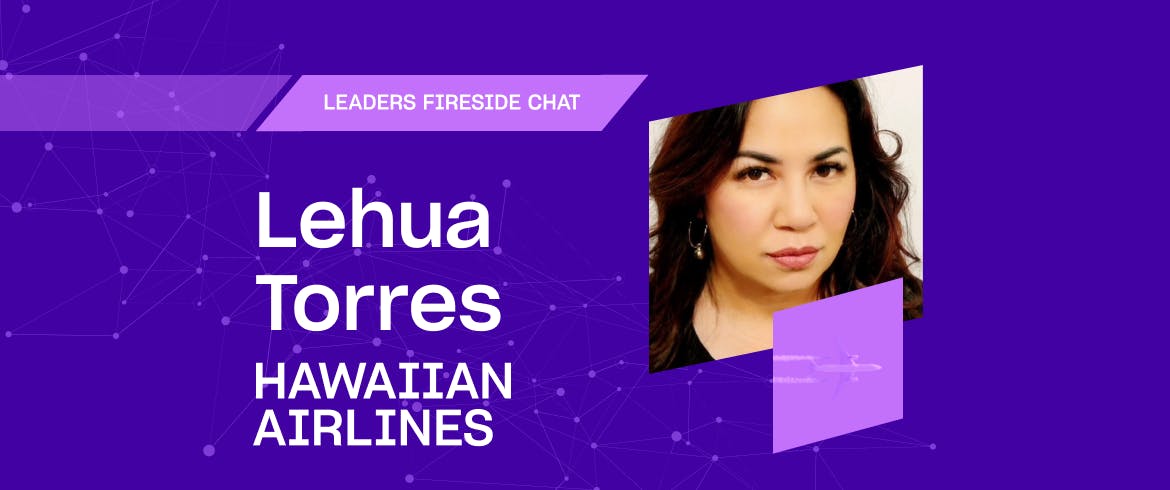
Hawaiian Airlines Senior Leader Discusses Women's Possibilities in Aviation
What advice would you give aspiring young women who want to break into the aviation industry?
Be flexible and seek opportunities, even those outside of your comfort zone. Build your network and take advantage of programs such as internships or women in aviation events
My start in aviation was very serendipitous. My son was taking Kempo class, and I would volunteer for events such as tournaments and potluck dinners. One of the other moms approached me and said, “I really like how you work and how you organize and I want you to apply for an open role at Hawaiian Airlines.”
At first, I brushed it off, but she asked me a few more times. What really got me was a comment she made about my son going off to college and having the ability to return home frequently. This job will give him that opportunity. I ended up applying and, after several interviews, was hired for the position; that’s how I got into aviation. And sure enough, my son turned 18 and hasn’t lived in Hawaii since.
What male-to-female ratio are you seeing today in your operation?
The percentage of women in director positions has risen to 25%, of the 20 roles available.
How has COVID-19 impacted your career?
Supply chain challenges such as raw material, manpower, and logistics forced us to adopt new risk management practices, such as increasing the inventory of critical components.
Did you/do you have any mentors or women you look up to?
I have two mentors that I meet with monthly: A male, who is a top leader in the aviation industry, and a female, who is in aviation as well. I believe mentors are an important part of one's success. They have guided me through shared experiences and have pushed me to take risks.
It’s important to seek out a mentor and you shouldn’t be afraid to ask for mentorship.
I actively sought my male mentor because I thought it’d be beneficial to be mentored by a male in leadership.
My other mentor came naturally. She always gave me feedback and encouraged me to go over other roles within Hawaiian Airlines. It’s important to be open to feedback and seek out personal development opportunities.
What’s your favorite part about being in aviation?
Aside from flying around the world, I love learning new things daily and being challenged with opportunities.
I also love how the aviation industry challenges us to think deeper to solve problems instead of falling back on surface-level solutions. For example, in the case of an AOG, instead of relying on the 3 PLs, we’ll do additional research to ensure we have the quickest route to get the part we need to solve for the AOG as fast as possible.
What’s one thing you would change about the aviation industry?
We still need to get more women involved in aviation. One of the things we can do is better educate young women on aviation career opportunities because most only see roles such as pilots, flight attendants, and mechanics as career paths.
Exposing all of the opportunities within aviation at high school career fairs is one good way to educate young women about potential careers.
At Hawaiian Airlines, we have a Girls Day in Aviation, where we expose high school girls to different parts of aviation by giving them tours to our operations.
Once we get women into the industry, the second challenge is guiding them into leadership positions. The industry needs (more) management and mentorship programs where promising talent is selected and educated so they have some of the experience needed when applying for leadership positions.
It would also help to have more women featured at industry events speaking about their experiences and their domains.
Where do you see the industry in 10 years?
In addition to seeing more women leaders (which I believe will happen!), I see technology continuing to evolve - and world markets changing where the U.S. will no longer be at the forefront for air traffic and supply chain.
Specifically, when it comes to technology, I’ve already witnessed the industry’s evolution. When I started in 2000, everything was code based. Now a lot of the data is pre-programmed into one system.
It’s getting much better when it comes to getting the necessary key performance indicators to access our performance and make key strategic decisions. In the past, we had to manually download information, and format it to make reports.
What is your take on digitalization?
The power of business intelligence, artificial intelligence, and machine learning can empower leaders to understand how to reduce the amount of manual effort that goes into our operations and become more strategic in making decisions.
This study showcases some of the best leaders in the aviation industry and explores their take on the state of the industry, their personal experiences, and what the future holds for aviation.
